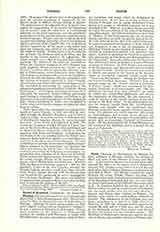

Plock, Diocese of (PLOCENSIS), in Russian Poland, suffragan of Warsaw, includes the district of Plock and parts of the districts of Lomza and War-saw. Apparently the diocese was founded about 1087, through the efforts of the legates sent to Poland by Gregory VII; the first certain notice of it is of the year 1102, when Duke Ladislaus Hermann was buried in the cathedral of Plock. The diocese included the region between the rivers, Vistula, Narew, and Bug, and extended as far as the northern and eastern boundaries of the Kingdom of Poland of that era. At a later date the strip of land north of the Drewenz River was added to it. It therefore included the greater part of the Duchy of Masovia and the northern part of Podlachia; but was much smaller than the two other dioceses—Gnesen and Posen—then existing in Poland. Its bishops were under the metropolitan authority of Gnesen. The endowment of the bishopric was very large; according to a charter of Duke Conrad of Masovia, in 1239 the episcopal landed property included 240 valve and at a later date also 20 prcedia. In the thirteenth century these estates were divided between the bishop and the cathedral chapter. The Partitions of Poland gave the greater part of the diocese to Russia, and a smaller portion to Prussia; since the publication by Pius VII of the Bull “De salute animarum” of 1821, the Prussian section of the diocese has been incorporated in the Diocese of Kulm. In the readjustment of ecclesiastical conditions in Poland, Warsaw was raised to an archdiocese, by the Bull “Militantis ecclesiae” of March 12, 1817, and the other Russo-Polish dioceses were made suffragan to it by the Bull “Ex impensa nobis” of June 30, 1818. Consequently Plock also was transferred from its metropolitan of Gnesen to Warsaw; at the same time five deaneries were taken from it, thereby reducing the diocese to its present size. Those estates of the bishopric that had not been secularized before this date were taken one after the other by the Russian Government. The Diocese of Plock shared in the sufferings of the Catholic Church of Russia. The episcopal see remained vacant during the years 1853-63 and 1885-90; of late years the sect of the Mariavites, with the aid of the Government, has spread in the diocese. Among the bishops of the present era, George Szembek (1901-03) and Apollinaris Wnukowski (1904-08) were elevated to the Archdiocese of Mohileff; the present bishop is Anthony Julian Nowowiejski, consecrated December 6, 1908. The cathedral of Plock was rebuilt after a fire in the years 1136-44, and thoroughly restored in 1903.
The diocese is divided into 12 deaneries and at the end of 1909 included, besides the cathedral, 249 parish churches, 31 dependent churches, 275 secular priests, 5 regular priests, 794,100 Catholics. As early as 1207 the chapter consisted of 5 dignitaries and 10 canons; since the publication of the imperial decree of 1865 it has consisted of 4 prelates (provost, dean, archdeacon, and a “scholasticus”) and 8 canons. There is also a collegiate chapter at Pultusk consisting of 3 prelates and 4 canons. The diocesan seminary for priests has been in existence since 1708; it has 10 professors and 72 clerics, and there are also 4 clerics in the Roman Catholic Academy at St. Petersburg. The only houses of the orders in the diocese are: a Carmelite monastery at Obory, with 5 fathers and 1 lay brother; a convent of the Clarisses at Przasnysz, with 9 sisters; 5 houses of the Sisters of Mercy with 25 sisters, who have charge of 4 hospitals and 1 orphanage.
JOSEPH LINS

